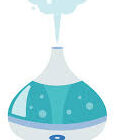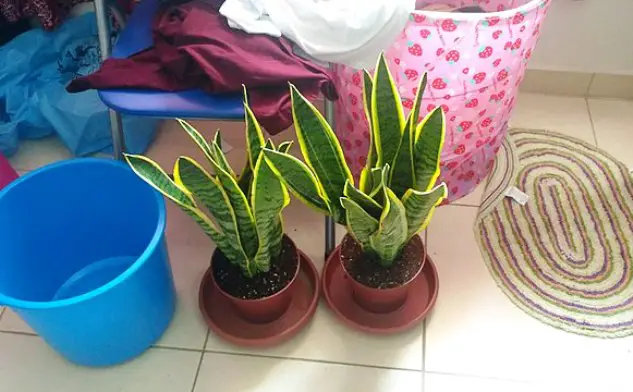How Close Do I Put a Humidifier to the Plants?
While you can use indoor plants to raise or lower humidity naturally, you still might need to run a humidifier for them if you live in a dry place.
But for maximum effect, you need to know the best position for the humidifier and your plants. In the same way that you need to know where to place a humidifier in the bedroom, positioning is everything when it comes to your indoor plants.
Indoor plants are among the top interior décor trends in the 21st century. You can check the home and lifestyle magazines if you don’t believe me.
Before you continue reading, perhaps you should first read my article on when to use a humidifier for plants.
However, that aside, when you have a humidifier and plants in the same room, how far should this appliance be?
Some sources will tell you 6 feet. Others will tell you 4 feet. In addition, others will also tell you 3 to 6 feet.
Therefore, you can see that there is quite a diversity of opinions on this matter. Keep reading; we will find the correct distance for your humidifier in relation to your plants.
Why is a humidifier for plants important?
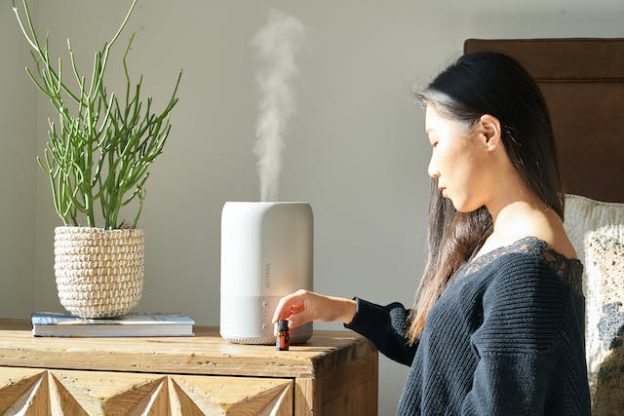
There are a variety of reasons why having a humidifier for your plants is important. Here are just a few of them.
1. It helps non-succulent plants
Of course, investing in a humidifier for plants is one of the best ways to increase humidity.
Therefore, in this case, the other question would be: What plants need a humidifier? There are many of them. For instance, unless you have succulent and cactus plants, which thrive well in desert conditions, you will need a humidifier for your plants.
However, the most important thing is to know where to place the humidifier so that the plants do not become too soggy with moisture.
Therefore, most people say that 4 to 6 feet is a good distance. Since you do not want your plants to inhale too much mist, by the time the mist travels from the source to cover 6 feet, it will have dissipated some.
2. It helps your plants during winter
Another reason why you need to humidify your indoor plants is that they will not thrive when the air in your house is too dry.
Remember, in winter and fall, when the heating system makes the air dry, you will need to crank up the humidifier. In addition, you might even need to use a humidifier in the summer when the air conditioner runs all through.
When you turn on the heat, it sucks the moisture out of the air, leaving it too dry. Therefore, you need to start up that humidifier. In addition to creating the ideal humidity for houseplants, you will also make your rooms more inhabitable.
Therefore, when you run a humidifier indoors, it can also benefit everyone in the house. However, please note that it all depends on placement!
Placing a humidifier too close to your plants is not good. The fan from the humidifier can draw back the moisture and leave the plant with little to survive on.
The humidifier should not be too far or too close. The distance should be 3 to 6 feet away from your indoor plants.
How to increase humidity for indoor plants
If your plants do not get the right humidity, they will start wilting. If they get too much humidity, they can start rotting. Therefore, the most important thing is to find a balance.
There are simple things you can do to ensure your indoor plants are fine. Of course, you need to know how to increase humidity for indoor plants.
Keep reading!
1. Start by getting the right humidifier
A humidifier is the simplest way for you to add moisture to your plants. Buy one, and you will not have to worry about your indoor plants dying.
In addition, a humidifier is the most effective option. In addition, you can get one with a humidistat. Therefore, when the indoor humidity gets too low, the humidifier cranks up automatically to start injecting mist into the air.
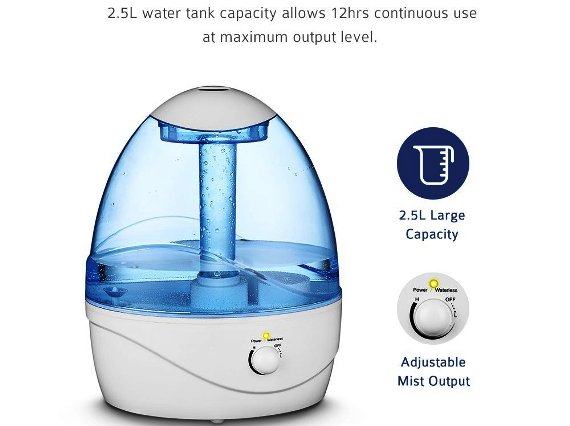
In addition, when the humidity reaches the set level, the humidifier for plants will switch off automatically. Therefore, even when you travel, you just need to make sure there is enough water in the humidifier.
An ultrasonic humidifier for plants will leave humidifier white dust on your plants.
2. Misting plants for humidity
Does misting plants increase humidity? Of course, it does.
Misting plants is one of the most effective ways of increasing humidity for them. However, when you use an ultrasonic humidifier for plants, it will produce mist.
However, when we ask: do misting plants increase humidity? We do not mean the same mist that comes from a humidifier. This is something entirely different.
Misting plants means you have to spray them with tepid water. That way, the leaves look as if they have dew settled on them.
Therefore, you can see it is different from using a humidifier on plants. After all, the best humidifier for houseplants produces mist for the air in the room where you have your plants.
If you do not have a humidifier for your indoor plants, don’t sweat it! Just learn how to mist your indoor plants. That way, you can find out how to create humidity for plants without spending money.
3. Group your plants
Plants can absorb moisture released by another plant. The plants should not be crowded to allow them breathing space. The distance also allows good circulation to keep off any disease.
Because of the process of transpiration where plants lose moisture to the air surrounding them, it is important to put your indoor plants in one room. That way, when some plants lose their moisture, it is going to help the other plants.
For instance, the succulent plants do not lose a lot of water. They would benefit a lot from the tropical plants, which lose more water to the atmosphere. Your entire room can benefit from more humidity if you have indoor plants.
When choosing your indoor plants, just look for plants that increase humidity. Since you just have to water them, you can increase humidity in your room without racking up your power bill.
4. Use a pebble tray to increase humidity
When people hear about this method, most of them ask: Do pebble trays work to increase humidity?
The answer is yes, they do. In addition, this is one of the simplest methods for increasing humidity for plants.
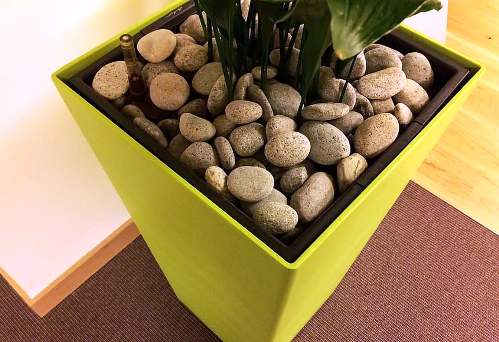
Just as its name suggests, this method includes having a shallow tray, placing clean pebbles in it, and adding water. With time, this water will start evaporating slowly, surrounding your plant with vapor.
When you add water to the pebble tray, you should place the potted plant in the tray. However, it will work best for small indoor plants.
Where to Place Humidifier for Plants FAQ
If you still need more clarity regarding where to place your humidifier for your indoor plants, these frequently asked questions will help you:
Where should a humidifier be placed on a plant?
Don’t place the humidifier on or under the plant. Place it at least 3 feet away. At this distance, the plants will not find the air too humid. They will be able to breathe comfortably.
Can a humidifier kill plants?
A humidifier can kill plants if wrongly placed. If you place it under the plant, on the plant, or closer than 3 feet, too much humidity will affect the breathing ability of the plant. Also, if it over-humidifies the air, it will “choke” the plants.
You need to maintain the right level of humidity for your plants so that they can thrive.
Do plants need a warm or cool mist humidifier?
It doesn’t matter. You can use either a cool or warm mist humidifier for your plants. However, because the warm mist produces warm “vapor,” place it at least 4 feet away. You can place the cool mist one closer, say, about 3 feet away.
Conclusion
That is it for where to place a humidifier for plants. In addition, you have also seen a few other things that you can do how to increase humidity for indoor plants. You have also seen how to set up a pebble tray for a fern.
Alternatively, mix your plants, specifically considering plants that increase humidity. Place such plants in the same room as the plants that do not increase humidity.
While one plant releases more moisture into its surroundings, the other plants can benefit.
Most importantly, place the humidifier about 3 to 6 feet from the plant. Too much humidity is not good for plants.
Dry indoor air is not good for plants either. Therefore, you need to find a balance.
